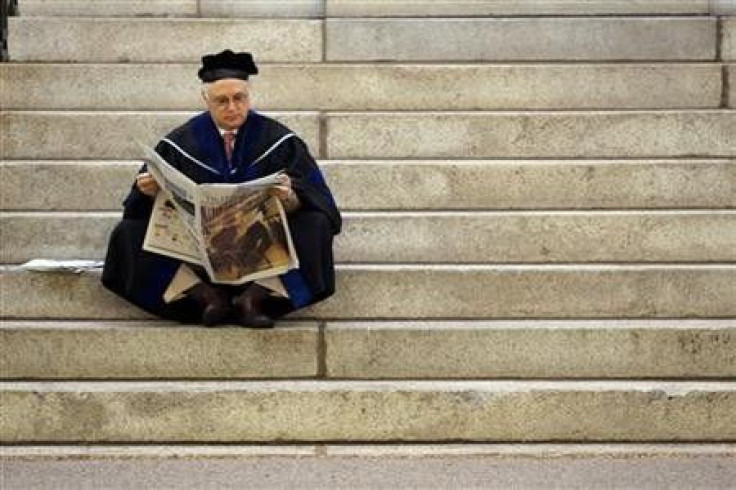Ivy League Are Top Colleges but Maryland Up-and-Coming

Ivy League schools again topped a popular ranking of the best U.S. colleges, but shared the spotlight with liberal arts schools Williams College and Amherst College, and up-and-coming University of Maryland.
In the 28th edition of the U.S. News and World Report rankings, Harvard University retained the top spot of 1,600 colleges in 2012, followed by fellow Ivy League members Princeton, Yale and Columbia University and the University of Pennsylvania -- all the same rankings as 2011.
But the California Institute of Technology, Massachusetts Institute of Technology, Stanford University and University of Chicago tied with Pennsylvania for the last top-five place.
Caltech and MIT gained two spots from 2011; Chicago four.
U.S. News also ranked colleges beyond the national universities. Williams and Amherst ranked as the top two liberal arts colleges that offer at least half their degrees in liberal arts studies, said U.S. News.
For the fourth year, U.S. News also asked responders to identify institutions that are making the most promising and innovative changes in the areas of academics, faculty, and student life.
Top up-and-comer, was Maryland, a public institution founded in 1963, with in-state-tuition and fees of $9,171 for 2011-2012, according to U.S. News. Maryland only ranks No. 157 among Best Colleges. Harvard had tuition and fees of $38,849 for 2011-2012, despite the largest endowment of any school in the world.
Upcoming college applicants and competitive college officials can also scour lists of regional colleges, A+ Schools for B Students, and Best Value Schools.
The last category has become increasingly important, as findings from the U.S. Department of Education released Monday showed the national student loan default rate rose to 8.8 percent in fiscal year 2009 from 7 percent in fiscal year 2008.
We need to ensure that all students are able to access and enroll in quality programs, Secretary of Education Arne Duncan said in a statement Monday. So they can enter the workforce and compete in our global marketplace.
U.S. News calculated Best Value by a school's academic quality -- as measured by its 2012 Best Colleges ranking -- and the 2010-2011 net cost of attendance for a student who receives the average level of need-based financial aid.
The higher the quality of the program and the lower the cost, the better the deal, U.S. News stated.
The surprising result -- Harvard, Yale and Princeton were still the top-three in value, with around of 56 percent of students receiving need-based grants, and averaging roughly a 70 percent discount from the total cost of attendance.
U.S. News' Bob Morse describes the report's methodology as a combination of survey responses and data provided by colleges in a number of categories. U.S. News looks at factors such as tuition, total enrollment, acceptance rate, average freshman retention rate, graduation rate, class size, and SAT/ACT percentiles to rank schools.
© Copyright Thomson Reuters 2024. All rights reserved.











